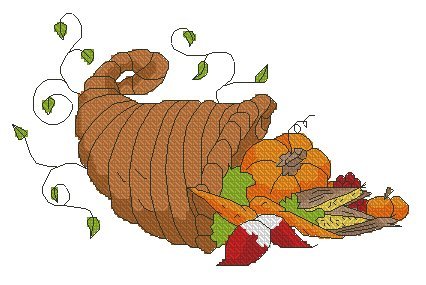Back in the early days of the internet, launching an online business was simple. Sure, you had to learn a lot of technical skills just to get your store up and running, but the lack of competition meant that once you’d found your niche in the market, it was relatively easy to turn a profit.
These days, the formula for online success has been flipped on its head.
It’s now super simple to start up an online store using a website builder like Shopify, and if you’re looking for a dropshipped and easy to implement solution, print on demand services like Printify make product creation and shipping a breeze.
On the other hand, the internet is larger than it’s ever been. Combine that with the relative ease of starting an online business, and you have a recipe for some extremely fierce competition.
Put simply, so many people are now selling online that standing out from the crowd with unique product positioning can be extremely tough. Many newcomers to the world of online selling are now asking themselves so many questions that they’re throwing in the towel before they ever get started:
- Is my idea good enough?
- How should I advertise?
- How do I create a unique brand?
- Is there too much competition?
- How do I know what to charge?
- How do I charge more for my items?
Avoiding decision fatigue
All of those questions are vitally important to ask, but in this article we’re going to take a detailed look at the last two items on the list:
How much should you charge for your products?
How can you successfully raise your prices?
That’s because understanding the importance of product positioning and knowing how to correctly price your products can be a make-or-break factor in the success of your print on demand business.
The amount that you charge will define the look and feel of your brand and advertising and it will also help you to understand who you’ll be competing against, allowing you to build a winning strategy for conquering your chosen niche.
Let’s dive right in:
- Why you should charge higher prices
- The lowdown on product positioning
- 7 tips for raising your prices the smart way
- Now it’s time to actually name your price
Why you should charge higher prices

One of the biggest mistakes that newcomers make when they start a print on demand business is failing to understand product positioning, charging far too little for the products that they offer.
There are a lot of big players selling online, especially in competitive niches like print on demand. Many established stores charge rock-bottom prices, and they’re able to do this because they sell thousands of items each month.
As a newcomer, you’re going to find it extremely difficult to compete with these kinds of sellers, so you’ll need to find a unique “edge” – A method of product positioning that will make life easier for you when you’re first starting out.
When you charge more money for your products, you don’t need to sell as many items as the big players, which in turn means that you don’t need as many visitors to your store. That means less money spent on advertising and more time and energy to focus on your brand and customer experience.
Put simply: If your products are priced correctly and your product positioning is on point, selling online is more like playing a video game on easy mode.
The lowdown on product positioning
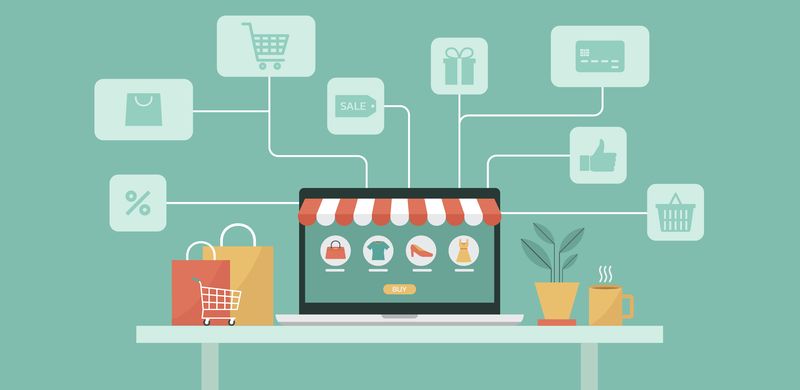

Before we get down to the specifics of how to price your products correctly, we need to give a proper definition of what we actually mean by product positioning.
Without delving too deeply into the realms of marketing jargon, “product positioning” is all about making sure that your online store and the items that you sell are a good fit for your intended audience. That process starts by asking yourself a simple question:
“Why should a person choose my products over the competition?”
There’s no need to get caught up in the details here. Just think about how you make decisions when you buy products for yourself. For the most part the process boils down to two basic value judgements:
- Tangible Value: How is the product made? Is it high or low quality?
- Intangible Value: Are there psychological or social benefits to owning the product that can’t be measured directly?
Product positioning example 1: Apple MacBook


Apple is a great example of a well-known company with unique product positioning: Apple fans will queue for hours for the latest products, and rarely stray to alternative brands. At the same time, others can’t understand why someone would pay a premium price for an Apple product, perceiving the brand as overpriced and lacking in features.
Tangible value
An Apple laptop’s tangible value is centered around the fact that it uses premium components and is more intuitive to use than other devices. A low-end laptop like a Chromebook has tangible value too because it’s a great entry-level computer with a cheap price tag.
As a general rule, Apple rarely bothers to convince potential Chromebook customers to buy one of their high-end laptops. They’re focused on selling to the top end of the market, and that’s reflected in their product positioning and pricing structure.
Intangible value
For certain people, Apple products are packed with intangible value. They love the look and feel of the items, and they’re strongly drawn to the company’s branding and “vibe”. Apple has worked very hard on creating intangible value that allows them to charge far more for their products despite them being fairly similar to the competition.
Product positioning example 2: Bespoke furniture


Imagine you’re looking at a website that sells custom or one-off pieces of furniture. The site has a gallery of moody photography featuring an old-fashioned workshop with a bearded guy in a flannel shirt, carefully crafting a table. The floor is covered in sawdust and the man’s hands look dirty and calloused.
Tangible value
In the case of this kind of product positioning, there’s very little tangible value at all. It would be far simpler to buy an Ikea table, especially when the bespoke furniture costs more money than a designer brand and takes months to be created from scratch.
Intangible value
On the other hand, you’re drawn to the bespoke furniture because you feel a strong connection to the carpenter who made it. You appreciate the work that’s gone into the table and you know that you’ll never see another like it. The fact that the craftsman is dirty and a little disheveled actually adds intangible value in this example.
Takeaway: Context is key
The two product positioning examples above highlight the fact that if you want to charge more money for your products, especially in a competitive niche like printing, you need a business model that’s focused on offering higher quality products than the competition, ideally selling items that come with an intangible benefit that your rivals can’t easily match.
Make it happen today!
7 tips for raising your prices the smart way
Now that you’ve understood the necessity of correct product positioning if you want to charge high-end prices, we’re going to give you some pointers on how to correctly price your products or raise them without losing sales in the process.
Here are some tried-and-tested techniques that really work:
1. Limit choice
You know how it can feel like there are a hundred different variables when it comes to starting an online business? Well, your customers feel the same way.
There’s a reason why companies like Apple are so highly focused on product positioning, only selling a few (high-ticket) items instead of hundreds of similarly priced alternatives. Researchers have known for a long time that if you offer a customer the choice between two similar (and similarly priced) products, they will often walk away without buying anything at all.
Decision fatigue is a real thing in the world of retail, so you need to ensure that you don’t paralyze your potential customers with too much choice, especially if you’re attempting to raise your prices.
How to do it:
Instead of offering premium custom t-shirts in hundreds of colors and designs, experiment with limiting your catalogue and adding price changes for differing features like type of material and style of neck line.
2. Increase your prices slowly


If you’ve successfully mastered product positioning and you’re already making sales, how do you raise prices without your existing customers complaining?
It’s pretty simple: Stick to the “ten percent” rule of thumb. In the world of marketing, it’s pretty much an accepted fact that a loyal customer will suffer a price increase of 10% without looking for a similar product elsewhere.
A 10% increase seems to work because shoppers either can’t spot the difference, or they feel like it’s such a small amount that they’re prepared to soak up the cost.
Important to remember:
A simple 10% price hike seems like an easy thing to do, but you need to be mindful of your brand: How long has your business been operating? Do you already have brand loyalty? Is your product positioning significantly different enough from the competition to justify the increase?
Think carefully before you make the switch, and consider only applying an increase to smaller, cheaper items like premium custom hats, where the price hike will likely fly under the radar.
3. Offer something in return


Everyone likes a sweet deal, even if they’re paying a high price for a premium product. Experiment with added extras and enticing freebies to help your potential customers make their minds up:
- Bundle your items: If your store sells items like premium custom t-shirts that are often purchased in multiples, you could experiment by offering a bundle deal at a discounted price.
- Offer something for nothing: If your prices aren’t at rock bottom, it’s much easier to achieve a decent profit margin, which in turn means that you have more wiggle room to offer free bonuses to your customers.
Important to remember:
If you’re aiming for product positioning at the higher end of the market, and your items are priced for their “intangible benefits”, then you need to be extremely careful about what you offer for free.
Deals like “buy one get one free” work really well with budget brands, but offering a high-end product for nothing is effectively damaging the image of the item you’re bundling it with. Eventually, this kind of tactic will severely damage your product positioning and brand status.
The solution?
Offer things for free that aren’t connected directly to the product, such as free shipping. That way you’ll appear generous, without ruining your image. Printify recently interviewed Christopher Sattes, who uses this exact idea in his own successful print on demand business:
“I make around 80% to 90% profit on my portraits. Because the margin is so big, I can offer free shipping and even run flash sales each month where I discount certain items by 25%. So I have a lot of wiggle room to keep my customers happy and still make decent money, even if I have to ship my products overseas.”
4. Use the right language
If you’ve taken the time to craft high-end items with premium product positioning, don’t throw everything away at the last minute with bad language choices and needy product descriptions that oversell your items or try too hard to justify their prices.
In research published by Stanford University, consumers were found to view a product more positively when they were told to think about how it made them feel, instead of focusing on the amount of money they had saved in the process.
“A person’s experience with a product tends to foster feelings of personal connection, leading to more favorable attitudes and more purchases.” – Jennifer Aaker, Stanford University
Which leads us neatly to:
Make sure your products aren’t competing with each other
Sometimes, when you’re caught up in writing the perfect description for a product, it’s tempting to compare it to something else that’s already in your catalogue. Unfortunately, many newcomers to the world of e-commerce make the fatal mistake of boasting about how much cheaper or better-featured product X is to product Y, which inevitably leads to a lost sale. Stanford’s Jennifer Aaker explains why:
“The fact that we made them make a comparison [between two products] caused them to fear that they were being tricked in some way.”
If trying to convince your customers that your products are better value than the competition sounds a little needy, imagine how bad it sounds when your item descriptions compete with each other!
5. Use number psychology
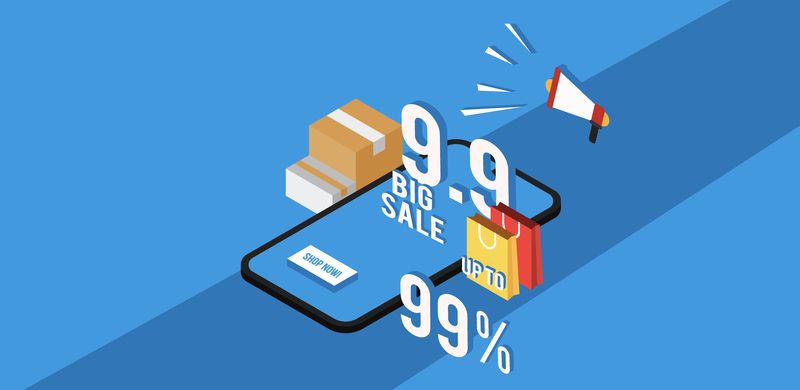
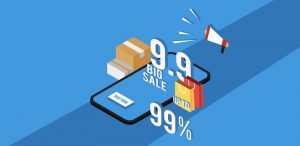
Everyone knows about product pricing hacks like listing an item for $99 instead of $100. But you know what? Even though you’re fully aware of this common psychological trick, it still works!
Think you can come up with a better formula? Think again!
The relationship between price tags, product positioning, and buyer psychology has been studied extensively for decades. By now, we know pretty much all there is to know on the subject. That means if you want to succeed at e-commerce, you need to follow some basic rules:
- Ending a price with a 9 really does work, usually beating all other numbers. Prices like $9.99 and $39 are so effective that they often perform better than cheaper alternatives like $7.50 and $35, even if they’re sat on the same shelf!
- By all means, try other numbers: Notice how this article lists 7 tips? Internet marketers have experimented with the number 7 to great effect, especially when selling digital products in amounts like $47 and $87.
- Make sure your prices are easy to read: In one study, researchers found that listing an item at $1,399.00 was far less successful than $1399. The extra comma, decimal point, and double zero make the price harder to pronounce out loud, which leads to it being perceived as more expensive.
6. Copy your favorite restaurant


Restaurants are masters of product positioning and pricing psychology. Next time you’re eating at your favorite food establishment try to spot examples of “price anchoring”, a tactic used on restaurant menus all around the world.
What is price anchoring?
Price anchoring is the simple idea that it’s much easier to sell something if it’s sitting next to lots of other things in the same pricing ballpark.
The entire housing market works on this principle, where home hunters can easily guess the correct value of a house by looking for cues in the other local listings.
On restaurant menus, expensive items are placed around the edges of the pamphlet, next to similarly priced dishes. This has the effect of making all of the regular items on the menu appear cheaper by comparison.
Perception is everything
When most people order from a restaurant wine list, they’re being subconsciously guided towards their decision by a combination of price and product positioning on the menu:
- Most diners would avoid picking the lowest ranking wine, for fear of being perceived as cheap.
- Many avoid picking the most expensive wine too, as it doesn’t seem like good value.
- The wines sitting in the middle of the list are usually where the biggest profit lies, as they’re positioned according to buyer psychology, not necessarily quality.
You don’t need to own a food business to benefit from these classic tricks: By utilizing psychological product positioning hacks you can increase the value of everything from premium custom hoodies to high end t-shirts and hats.
7. Avoid testing your prices
This last tip might sound a little reckless to more experienced online marketers who insist on split testing every product and marketing campaign they offer.
That’s great if you’re at an advanced level and you have the luxury of massive volumes of website traffic and very well-established product positioning. However, for newcomers to the print on demand niche, messing around with prices can be disastrous.
Firstly, it sends very bad signals to your audience, especially when you’re just starting out. Visitors to your store might not buy on the first viewing, so if they’re presented by wild swings in pricing, they’re likely to think there’s something fishy going on.
Beyond that, constantly tweaking your prices sends out a negative message to your own subconscious that will ultimately lead to failure. When you start selling online, it’s important to do some initial research, but it’s more important to develop a positive attitude and a strong work ethic. Pick a price, stick to your guns and concentrate your efforts on more important things than testing and tweaking, such as developing a solid brand, correct product positioning and excellent customer service.
The testing can wait for the time being!
Now it’s time to actually name your price
OK, so we’ve explored some of the ways that you can use language and psychology to get the best prices for your products, and we’ve explained how product positioning can influence what your customers are willing to pay for those sweet premium custom t-shirts that you’ve built your new brand around.
Now it’s time to actually make a decision and set your prices for real!
Should you copy competitors with similar product positioning or simply pluck a figure out of thin air? Maybe you lean more towards the analytical side of things?
What follows are some of the methods commonly used by online marketers and e-commerce pros to price their products. Let’s check out how they stack up:
Cost-plus pricing


Let’s get this straight out there before we continue: So-called cost-plus pricing is a terrible idea for newcomers and e-commerce pros alike.
Cost-plus pricing is a common method used in old-fashioned bricks-and-mortar businesses, but it doesn’t translate well to the online world and it’s a terrible choice if you’re shooting for high-end product positioning with an “intangible value” style of product.
So what is cost-plus pricing? Put simply, cost-plus pricing is about adding up all of the production, marketing, and shipping costs of a product and bolting on an arbitrary percentage figure to that price.
It seems logical and neat, but trust us, it’s a terrible way to think about your products and brand as a whole.
Thinking about pricing this way encourages a very inwardly focused mindset. It forces newcomers to constantly obsess over profit margins above all else, and it can be seriously harmful for people trying to develop a brand.
Cost-plus pricing models are best left for big corporations and established companies looking to shift large volumes of products at tight profit margins.
Competition-based pricing
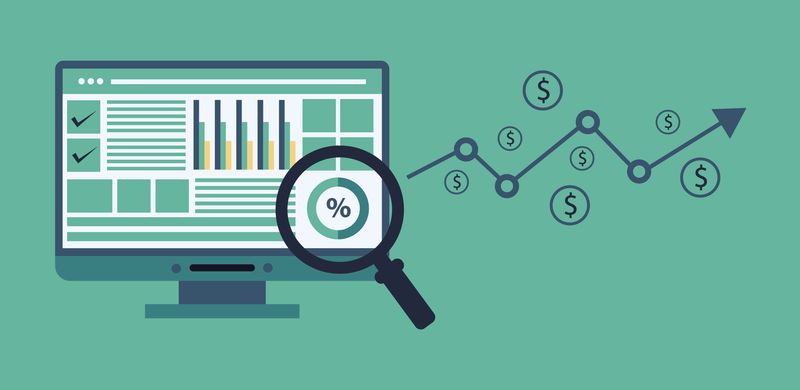

Competition-based pricing is as simple as it sounds: You research your competitors or other items with similar product positioning, then try to match them on price.
It’s a solid strategy and it works well for lots of businesses, but you need to be aware of the pros and cons of adopting this kind of pricing plan:
The pros:
- It’s really easy. You study the competition and set your prices to match theirs. No analysis needed.
- You know that people are buying similar items at that price, so any lack of sales must be down to low traffic or marketing shortfalls.
The cons:
- You’re assuming that your competitor’s business runs like yours. What if they have heavy financial backing that allows them to run at a loss? Your product may be better than theirs, but you might not be well established enough to pull off their pricing structure.
- The competition isn’t necessarily running in the same market segment as you. That means you could have seriously over or underpriced your product.
- What if your competitor has simply pulled their prices out of thin air? You’d be surprised how often this happens. If that’s the case, there's no advantage to copying them!
The big lesson from competition-based pricing is that although it’s more ambitious and optimistic than simply tacking on a percentage to your overheads, it often makes assumptions that aren’t always true. What if competitors with similar product positioning also copied existing market trends and got their research completely wrong?
Competitive pricing works, but it can also be subject to a “Blind Leading the Blind” mentality.
Value-based pricing


And here we have the Holy Grail. The pricing model that trumps all others and one that’s ideally suited to competitive niches like print on demand.
If you’ve understood the idea of product positioning and the benefits of offering intangible value, then value-based pricing will instantly seem like the right path to follow.
So what exactly is value-based pricing?
In a nutshell, it’s all about taking the time to understand why people value your products and intuitively knowing how much they are willing to pay for them.
Value-based pricing is a mix of economics, psychology, strategy, and marketing. It’s about throwing aside rules of thumb and outdated business advice and daring to be confident, whilst trusting in your own ability.
Value-based pricers understand what they’re worth, and they have the mindset and skills to forge their own path. There’s a reason why the world’s top brands command high prices and huge brand loyalty.
The question is, how will you use perfect product positioning so that you can set prices on your own terms?
Make it happen today!
The post Product positioning: how to raise your prices in a competitive marketplace appeared first on Printify.







